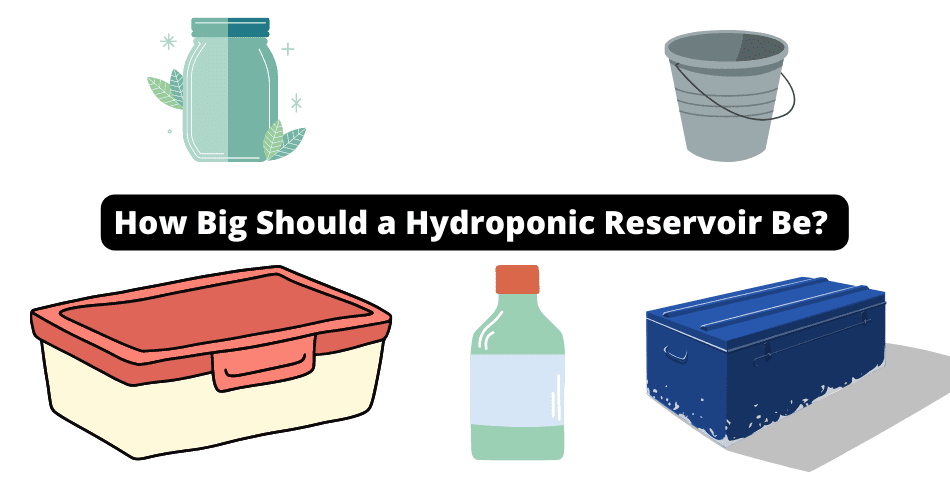A hydroponic reservoir is one of the essential parts of hydroponic systems; it’s a reservoir for the nutrients and water your plants need to thrive.
Hydroponic reservoirs are made from various materials and come in multiple designs and sizes.
Depending on your long-term goals, your reservoir tank might serve a practical purpose or as an aesthetic centerpiece.
No matter your goal – there is always that one question.
How big should a hydroponics reservoir be?
As a quick guide, You can then use these general guidelines to determine the right size for your tank.
- Small-sized plants – At least ½ gallon (1.9 liters) per plant
- Medium-sized plants – At least 1 ½ gallons (5.7 liters) per plant
- Large-sized plants – At least 2 ½ gallons (9.5 liters) per plant
While these are the recommended figures, many experienced farmers often double or triple these volumes as a safety precaution.
This article will also discuss the reservoir’s importance, common advantages, disadvantages, and other things to look for in picking the correct hydroponics reservoir.
Size Matters!

What Is a Hydroponic Reservoir?
Plants in a hydroponic system require a growing medium for stability, support, and a source of nutrients.
This is commonly known as a hydroponic reservoir (or just a reservoir). This nutrient tank stores plants’ water and nutrient solution for optimal growth and well-being.
Reservoirs can be constructed from nearly any material and come in various sizes.
The tank or container may be located in the same structure as the plants, or it may be found elsewhere, with a water pump and a network of tubing used to periodically provide the roots of the plants with water and nutrients.
This one’s made with PVC pipes!
Why Does the Size of My Hydroponic Reservoir Matter?
One major factor to consider when shopping for a reservoir is the size of the plants you will be growing. Having a tank that’s too big can be frustrating, but having a tank that’s too small is much worse.
If your tank is too small, your plants won’t get enough nutrients.
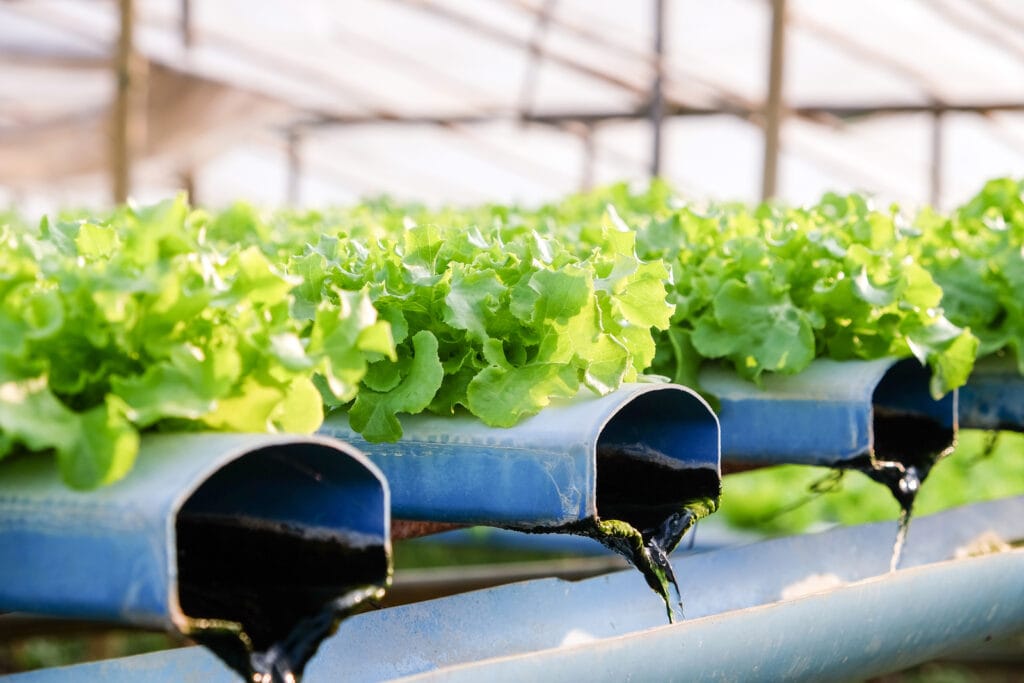
Growers often run into issues with their hydroponic systems if their tank or container is too small for the number of plants being grown.
When plants like lettuce are young, their long-term size is often overlooked.
However, they’ll require more food, water, and air as they grow.
How Big Should a Nutrient Reservoir Be?
Inexperienced gardeners sometimes forget that even the tiniest seedlings will eventually mature into huge plants.
(This happens a lot in mason jar hydroponics)
When the plants are young, they only require a small volume of nutritional solution, but as they develop, they will need a much higher volume.
The worst-case scenario is reaching the middle of the plant growth phase and realizing that your nutrient storage is inadequate.
Trust me; there’s nothing worse than your reservoir being too small.

As a result, you’ll need to make regular adjustments to the concentration, PH, and temperature, which will take a toll on your plants.
So, how extensive should a reservoir be?
Fortunately, a simple and general rule of thumb can be used as a guide.
The water-to-nutrient-solution ratio per plant is the same in all systems.
One of the first considerations is how many plants will be housed within it, and the second essential information is the size they attain when fully mature.
You can then use these general guidelines to determine the right size for your tank.
- Small-sized plants – At least ½ gallon (1.9 liters) per plant
- Medium-sized plants – At least 1 ½ gallons (5.7 liters) per plant
- Large-sized plants – At least 2 ½ gallons (9.5 liters) per plant
While these are the recommended figures, many experienced farmers often double or triple these volumes as a safety precaution.
Why Do You Need Hydroponic Reservoirs?
Reservoirs are essential to any hydroponic system because they help store nutrients and water.
Providing the correct amount of water and supplements to your plants while maintaining precise control over the nutrient solution’s temperature, pH, concentration, and oxygenation is a significant challenge, even in hydroponics.
But when compared to alternative methods of providing plants with vitamins, reservoirs offer the highest degree of convenience for keeping your plants as healthy and happy as possible.
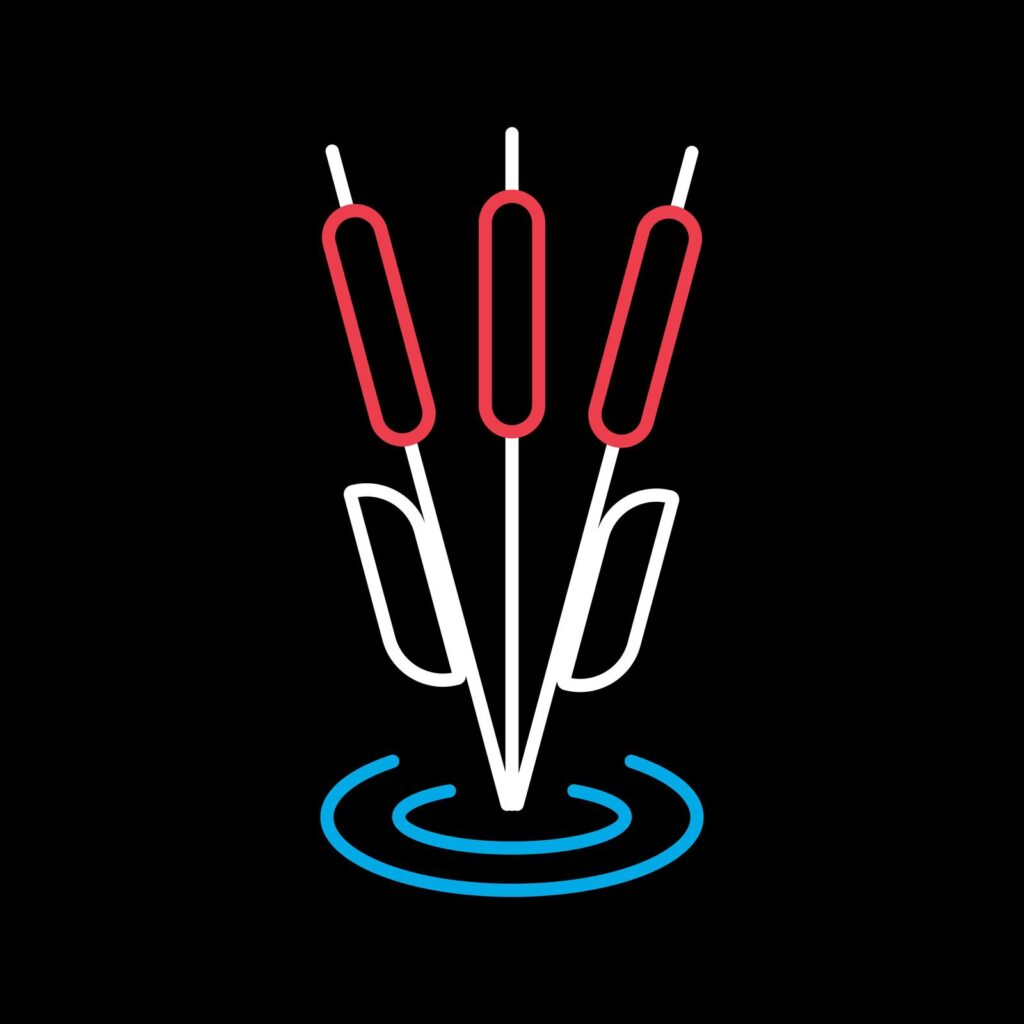
In addition, a reservoir also:
- Helps in the preparation of the nutrient solution
- Assist in maintaining the temperature of the nutrient solution
- It helps maintain and adjust the nutrient concentration
- Faster Growth from Solution means higher profits
- Provides Structure To The Whole System
- A centralized place for messing with plants/nutrients
- Helps In Harvesting Your Plants
What Are Some Advantages of a Hydroponic Reservoir?
Help in the preparation of nutrient solutions
One of the best places to mix up your nutrients is in a hydroponics nutrient reservoir.
To avoid running out of nutritional solutions too soon, it’s preferable to have two reservoirs on hand so one can be used at all times while the other is used as a backup.
If you don’t have the space or resources for that – keep an extra bag of nutrients readily available in case the plants take up more nutrients than you expect.
Allows for the oxygenation of nutrient solutions
In most hydroponics setups, plant roots are constantly immersed in a steady stream of water. If the roots aren’t constantly exposed to oxygen, they may suffer or die.
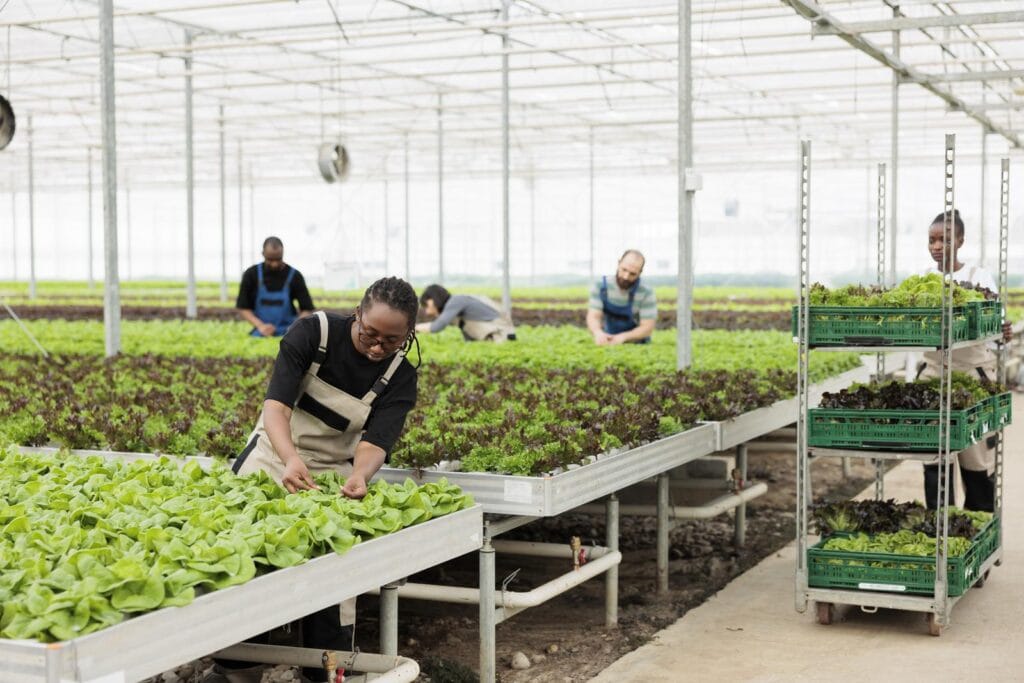
This is crucial in hydroponics systems like deep water culture and the nutrient film technique, where the roots are always kept submerged in water.
In most cases, adding oxygen to the nutrient mix is best.
In most setups, an air pump supplies air to an airstone within the tank.
In our experience, the reservoir is an excellent location to carry out the necessary oxygenation.
A hydroponics reservoir holds and supplies your plants with nutrients and water.
While hydroponics can take many forms, it is always crucial for the reservoir to feed the plants with water and nutrients consistently.
Either the plant’s roots will extend into the reservoir itself, or the nutrient solution will be actively or passively pumped into the pot.
Allows the pH of a nutrient solution to be monitored and adjusted as needed.
The concentration of nutrients and water temperature are two of the most important factors that can significantly impact the pH of the nutritional solution.
If your hydroponic plants want to thrive, you must ensure the pH level is always within a safe range.
A pH meter or test kit can be used with little effort, thanks to the presence of a nutrient reservoir.
Since it’s easy to overcorrect the solution’s pH, this will also make pH adjustments much more precise.
And, you guessed it, it should be installed in your reservoir!
What Are Some Disadvantages Of A Hydroponic Reservoir?
Fluctuating temperatures:
Water temperature is difficult to keep within the ideal range since it can easily be affected by the natural atmosphere.
Most plants can withstand up to 60-86°F in their reservoir for a few days, but infections are more likely to invade your medium and kill off your plants’ roots when temperatures dip outside these ranges.
If your reservoir gets too hot, it’s almost always the result of a warm atmosphere, leading to the nutrient concentration.

Technical malfunctions:
If the air pump stops working or the electricity goes out, plants will quickly die from a lack of oxygen at their roots.
A clogged nozzle or malfunctioning pump is also harmful to your garden.
If the water pump in your system breaks or becomes clogged, your plants may die.
Unfortunately, blocked spray nozzles are a common problem with aeroponic systems.
If this occurs, the exposed roots will dry out quickly, which will cause your plants to wilt and die.
Air pumps can also break down.
This will cause a rapid depletion of dissolved oxygen in the water and can quickly lead to the death of submerged plant roots.
What Happens If My Hydroponic Reservoir Is Too Small?
If your plants are growing rapidly and consuming a lot of water and nutrients, you may run into several issues if you use a smaller reservoir.
Common problems you may encounter include the following:
Changes in nutrient solutions
Remember that plants only take what they need from the water, leaving behind any excess nutrients.
The intake of nutrients and water is uneven, and using a bigger reservoir than needed is a highly effective method for minimizing nutritional swings.
While plants will still consume the same total volume of nutrients regardless of the concentration of the nutrient solution, the proportion of the total water volume that the plants require will decrease.
Significant pH fluctuations
Significant shifts in the amount of water in the nutrient solution can also trigger pH changes, which can happen for several reasons.
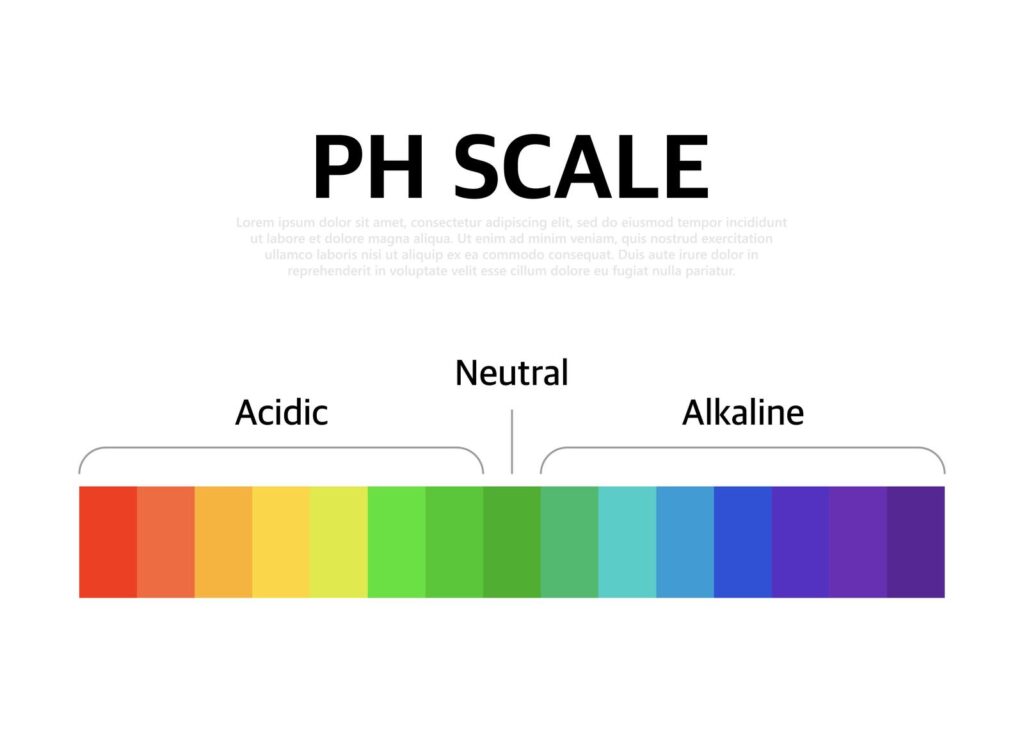
Mineral salts (nutrient molecules) can bind when there are large changes in nutrient concentrations, as was previously indicated. Because of this, the pH level may shift.
Furthermore, the pH will change every time you add fresh water to replace the old water unless you use already balanced water.
When you have to replenish the water regularly due to the small capacity of your reservoir, the situation worsens.
Depletion of oxygen
The “O” in H2O stands for oxygen, an essential water component.
Dubbed “dissolved oxygen,” the oxygen found in water is inaccessible to humans without gills. Plant roots can take in oxygen from the water through a process similar to fish gills.
More oxygen is required as the plants get larger.
As the plants get bigger, they drink more water and can quickly use the dissolved oxygen in the water if it isn’t replaced every few days.
What Is the Best Temperature for a Hydroponic Reservoir?
Keeping your nutrient solution within a specific range is essential for those who employ natural hydroponic systems, like Deep Water Culture (DWC), or maintain a sizeable reservoir of solution to prevent severe damage to their plants.
Generally speaking, the more heat a solution has, the less oxygen it can offer a plant.
It’s recommended that you store your nutrition solution between 63°F (17°C) and 86°F (30°C).
When the nutrient solution temperature in a reservoir dips below 60°F (15°C), plant development slows and eventually stops altogether unless the temperature is raised.
Cooler reservoir temperatures may lead to higher dissolved oxygen concentrations; however, this requires maintaining temperatures above 15°C.
What’s The Best Nutrient Solution to Put in My Hydroponics Reservoir?
This is one of the most well-known names in the hydroponics market thanks to the company’s long history of reliable service.
The kit consists of three bottles with separate components, and its packaging is also designed to preserve vital micronutrients and macronutrients for various plants and growing conditions.
This is a three-part nutrition kit, and each bottle has a distinct purpose. The micro-bottle is the primary fertilizer, containing various nutrients vital to the development of the plant.
The micro’s nutrients are supplemented by those in the grow bottle, which promote vegetative growth; the bloom bottle’s nutrients help the plant bloom beautifully rather than looking unhealthy and malnourished.
It also has precise pH technology that can regulate the water’s pH level.
